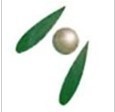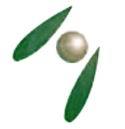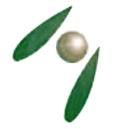Tocopherol
About Tocopherol
Name: TocopherolSynonyms: Vitamin E; 3,4-Dihydro-2,5,7,8-tetramethyl-2-(4,8,12-trimethyltridecyl)-2H-1-benzopyran-6-ol
Molecular Formula: C29H50O2
Molecular Weight: 430.71
CAS Number: 1406-18-4 (1406-66-2)
Tocotrienols, which are related compounds, may also have vitamin E activity. All of these various derivatives with vitamin activity may correctly be referred to as "vitamin E." Tocopherols and tocotrienols are fat-soluble antioxidants but also seem to have many other functions in the body.
The compound -tocopherol, a common form of tocopherol added to food products, is denoted by the E number E307.
Vitamin E exists in eight different forms, four tocopherols and four tocotrienols. All feature a chromanol ring, with a hydroxyl group that can donate a hydrogen atom to reduce free radicals and a hydrophobic side chain which allows for penetration into biological membranes. Both the tocopherols and tocotrienols occur in alpha, beta, gamma and delta forms, determined by the number of methyl groups on the chromanol ring. The tocotrienols differ from the analogous tocopherols by the presence of three double bonds in the hydrophobic side chain. Each form has slightly different biological activity.
In foods, the most abundant sources of vitamin E are vegetable oils such as palm oil, sunflower, corn, soybean, and olive oil. Nuts, sunflower seeds, seabuckthorn berries, kiwifruit, and wheat germ are also good sources. Other sources of vitamin E are whole grains, fish, peanut butter, goats milk, and green leafy vegetables. Fortified breakfast cereals are also an important source of vitamin E in the United States. Although originally extracted from wheat germ oil, most natural vitamin E supplements are now derived from vegetable oils, usually soybean oil.
Commercial vitamin E supplements can be classified into several distinct categories:
Fully synthetic vitamin E, "dl-alpha-tocopherol", the most inexpensive, most commonly sold supplement form usually as the acetate ester;
Semi-synthetic "natural source" vitamin E esters, the "natural source" forms used in tablets and multiple vitamins. These are highly fractionated d-alpha tocopherol or its esters, often made by synthetic methylation of gamma and beta d,d,d tocopherol vitamers extracted from plant oils.
Less fractionated "natural mixed tocopherols" and high d-gamma-tocopherol fraction supplements
Vitamin E is widely used as an inexpensive antioxidant in cosmetics and foods. Vitamin E containing products are commonly used in the belief that vitamin E is good for the skin; many cosmetics include it, often labeled as tocopherol acetate, tocopheryl linoleate or tocopheryl nicotinate. Some individuals experience allergic reactions to some tocopheryl esters or develop a rash and hives that may spread over the entire body from the use of topical products with alpha tocopheryl esters.

Tell us about your requirement

Price:
Quantity
Select Unit
- 50
- 100
- 200
- 250
- 500
- 1000+
Additional detail
Mobile number
Email
More Products in Starch Derivatives Category
health food/Rhodiola rosea extract softgel capsule
Flavor : Neutral
Pack Size : 30 / 60 / 90 Capsules per Bottle
Form : Other, Softgel Capsule
Fat Content (%) : 0%
Grade Standard : Other, Pharmaceutical Grade
Purity : >98%
Malic acid(CAS No.6915-15-7 ),E296
Flavor : Characteristic Sour (acidic)
Pack Size : 25 kg
Form : Powder
Fat Content (%) : 0%
Grade Standard : Other, Food Grade
Purity : 99% Min.
Blueberry Red
Flavor : Blueberry
Pack Size : 1 kg, 5 kg, 25 kg
Form : Powder
Fat Content (%) : 2 %
Grade Standard : Other, Food Grade
Purity : 99 %
Mannan-oligosaccharides MOS
Flavor : Neutral
Pack Size : 25 kg
Form : Powder
Fat Content (%) : <0.5%
Grade Standard : Other, Feed Grade
Purity : 90%
 |
A & Z Group Co.,Ltd
All Rights Reserved.(Terms of Use) Developed and Managed by Infocom Network Private Limited. |
 English
English Spanish
Spanish French
French German
German Italian
Italian Chinese (Simplified)
Chinese (Simplified) Japanese
Japanese Korean
Korean Arabic
Arabic Portuguese
Portuguese
 Send Inquiry
Send Inquiry






 Send Inquiry
Send Inquiry